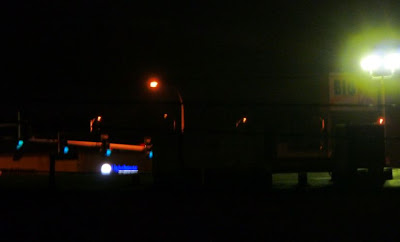That’s a little phrase I made up recently. When I play it on keyboard I usually play it something like this.
Playing the melody is pretty easy, even with the sixteenth notes. And playing the chords (Em7, CM7, F#m7b5, D7) is pretty easy, too, even if you make the chord rhythm more interesting than this. But for me getting both of my hands to work together and keep time for this is, depending on my mood, either really fun or really challenging.
Right now this is my favorite kind of thing to practice with on keyboard. It’s interesting to my ears and it’s simple enough for me to get through. And it’s simple enough for me to move from key to key and practice the whole keyboard.
*
I like making up stuff to practice with rather than use scales or old songs. It’s so tempting (for me) to get technical or to live in the past that making up stuff is a kind of meditation drill to keep in the now and stay present (as new age types used to say).
Pete Townshend famously wrote the lyrics “I hope I die before I get old” (in “My Generation”) and for better and worse he managed to stay alive. But now he seems to completely live in the past, re-hashing his old triumphs and, too, being none-too-humble about it. I recently re-read this bit about Pete:
Right now this is my favorite kind of thing to practice with on keyboard. It’s interesting to my ears and it’s simple enough for me to get through. And it’s simple enough for me to move from key to key and practice the whole keyboard.
*
I like making up stuff to practice with rather than use scales or old songs. It’s so tempting (for me) to get technical or to live in the past that making up stuff is a kind of meditation drill to keep in the now and stay present (as new age types used to say).
Pete Townshend famously wrote the lyrics “I hope I die before I get old” (in “My Generation”) and for better and worse he managed to stay alive. But now he seems to completely live in the past, re-hashing his old triumphs and, too, being none-too-humble about it. I recently re-read this bit about Pete:
The song is about alienation, pollution, and a cold, heartless big brother—“only teenage wasteland.” It also features a duet between Townshend on ARP 2600 and Dave Arbus (formerly of East of Eden) on violin. Originally, Townshend had intended the song to be a twenty-piece orchestral and synthesizer work, but in the end he went with a demo track he had prerecorded in his own studio on the ARP 2600. As “blue eyes” himself puts it, “This definitive classic seventies rock song actually came from an indulgent experiment in electronic music.”
that excerpt is
from “Analog Days”
by Trevor Pinch
and Pinch got
the Townshend quote
from “Behind Blue Eyes,”
by Geoffrey Giuliano
--they’re talking about
Baba O'Riley
One reason I’ve been thinking about this living in the past nonsense is because something frightening happened to me last weekend.
For reasons I don’t want to get into I watched an old video on YouTube. The video isn’t from the seventies, but rather one decade later and by people a generation or two younger than Townshend.
By some twist of fate, I actually remembered (I think) seeing the clip when it originally happened.
When I first saw it I could only think how ridiculous all the performers looked, how awful everything was—the music, the idiotic club dancing. Now, watching the clip decades down the road, the only thing I think is how sexy the two girls look, in white and red, and how sexy their dancing is.
Have a scare:
For reasons I don’t want to get into I watched an old video on YouTube. The video isn’t from the seventies, but rather one decade later and by people a generation or two younger than Townshend.
By some twist of fate, I actually remembered (I think) seeing the clip when it originally happened.
When I first saw it I could only think how ridiculous all the performers looked, how awful everything was—the music, the idiotic club dancing. Now, watching the clip decades down the road, the only thing I think is how sexy the two girls look, in white and red, and how sexy their dancing is.
Have a scare:

























